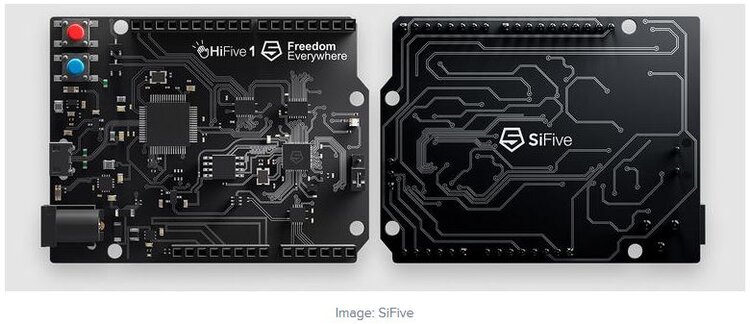RISC-V Might Actually Be A Safe Bet
RISC-V (Reduced Instruction Set Computer, colloquially known as Risk 5) architecture is all the rage these days, as it’s expected to be a faster and more cost effective alternative to the typical CISC (Complex Instruction Set Computer) architecture favored by microprocessor designers since the dawn of the industry. Simply put, RISC-V architecture aims to accelerate operations by carrying out a single instruction per CPU cycle. While RISC-V will require a greater number of instructions than CISC, the instructions will be carried out more quickly. Faster and more efficient than CISC, RISC-V’s proponents expect it to one day replace Arm CPUs in a range of use cases, and it comes with the added benefit of it being less power- and resource-hungry than the competition.
As RISC-V architecture continues to gain momentum, one indication of its increasing popularity and market traction is the rate of expansion of the ecosystem of products and technologies that support the architecture. In this space, we will periodically review some of these important ‘clues’ as to the possible success or failure of RISC-V at disrupting the decades-old (one might even be tempted to use the word ‘stagnant’) MCU product architectures. One such ‘clue’ is the state of development kits available for the architecture- a factor we believe to be a major indicator of future adoption rate growth. The thinking goes that the greater the number of available kits, the faster market growth will occur.
In March, SiFive, a San Francisco-based semiconductor company that purports to be the first to produce a chip that employs RISC-V architecture, released an upgrade to their HiFive1 single-board computer powered by the company’s E31 RISC-V core. SiFive’s SBC is a 32-bit, 68mm x 51mm development board designed for Arduino and real-time embedded applications. The new FE310-G002 revision of SiFive’s original E31 RISC-V core (first introduced in 2016) features a new low-power sleep mode and a 3.3V always-on domain, up from the 1.8V in the original design. It implements a 32-bit RV32IMAC core with a 16KB L1 instruction cache, 16KB SRAM and runs at 320+ Mhz, according to the company, making it “among the fastest microcontrollers on the market.” SiFive, however, will soon have more competition in this still-burgeoning market.
GigaDevice, a Chinese manufacturer known heretofore as a NOR Flash Memory provider, will soon be releasing the GD32V series, a line of RISC-V-based MCUs. The GD32VF103 series feature a “Bumbebee Core” at 108MHz, 8-32KB of SRAM and 16-128KB of flash memory. Peripherals include a USB on-the-go port and a CAN 2.0B bus. Although the company has yet to release any documentation (in English) or software development kits, the GD32VF103C-START board and the GD32VF103TBU6 MCU are both available for sale at Tmall, a popular Chinese retail electronics site.
Sipeed, however, another Chinese manufacturer based in Shenzen, has released a development board that employs the GD32V MCU that’s listed on seeedstudio.com for just $4.90 US (the estimated availability date is October 16th). Built around GigaDevice’s GD32VF103CBT6 32-bit RISC-V (rv32imac) microcontroller, Sipeed’s Longan Nano also features a 0.96-inch 160×80 IPS RGB LCD display, a USB Type-C port, four general purpose 16-bit timers, two basic 16-bit timers and an advanced 16-bit timer. The specifications listed on the Longan Nano Seeed page claim that it consumes only approx. 33% as much power as an ARM Cortex-M3.
These are just a few of the RISC-V-based development kits currently available from internet retailers. We’ll revisit this topic with another roundup of related products in the not-too-distant future.
